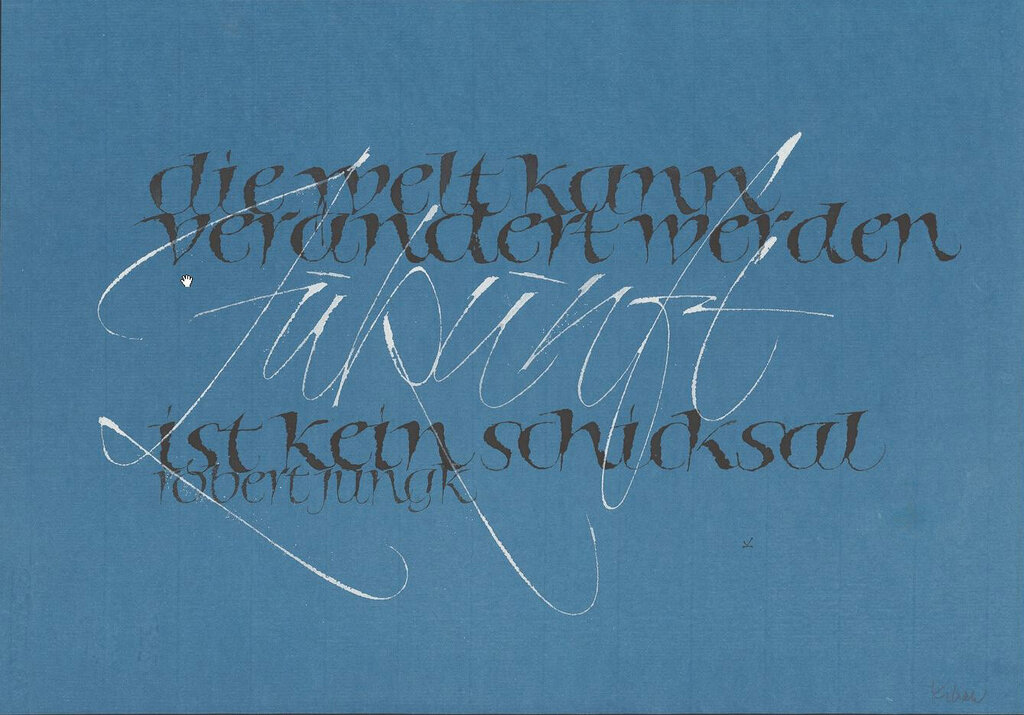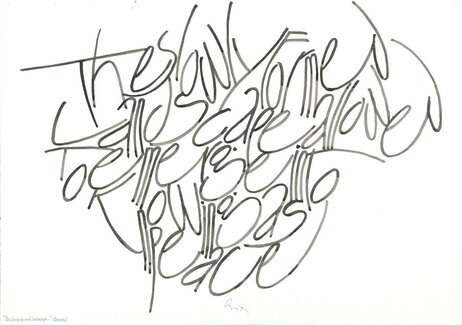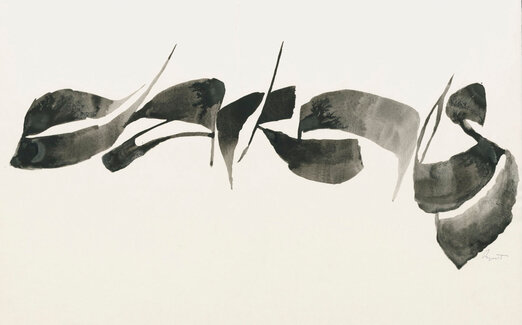
Calligraphy
The collection comprises about 1,900 contemporary calligraphy works and the corresponding documentation material. It provides an insight into the development of calligraphy over the last 40 to 50 years, Three main aspects are decisive here: Latin script, free handling of the form of writing and the constructed (designed) handling of characters.
Archive and collection
The collection, founded in 1999, illustrates the entire spectrum of calligraphic design options: classical, flowing and broken scripts from Roman type to cursive, which make the words or text easy to read, compared to free and expressive handwriting that produces texts that are difficult to read. Unusual materials and techniques also add a special note to the writing. In addition to calligraphy, printed graphics, reproductions, typographic fair copies, posters and poster designs, book sleeves, artists’ books and job printing as well as archive materials are collected. The collection was formed from and is expanded by permanent loans and gifts. The acquisition process is supported by an international committee of renowned calligraphers.
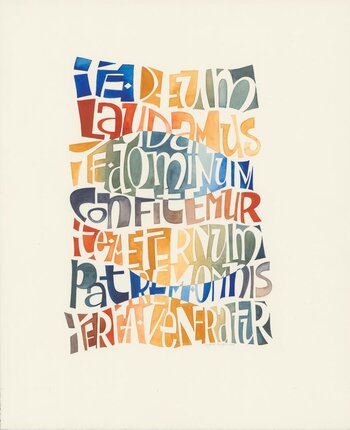
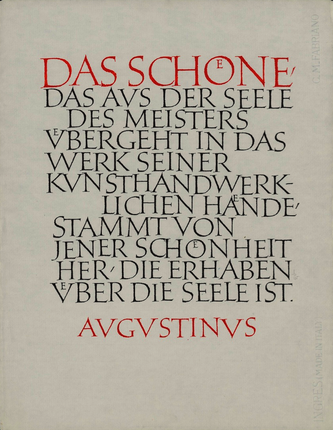
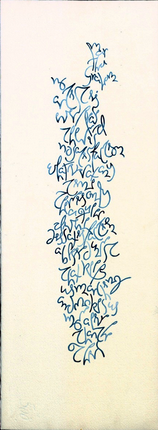
Hans-Joachim Burgert
The founder of the Berlin Calligraphy Collection, Hans-Joachim Burgert, studied painting at the Academy of Fine Arts in Berlin from 1947 to 1954, as a guest under Karl Schmidt-Rottluff and Ernst Schumacher. In 1977, he was appointed Professor of Freies Gestalten (free-form design) in the Architecture Department at the Technical University of Applied Sciences Berlin. As a book artist, musician, graphic artist, painter and organist, his artistic ambition covered a broad range.
In addition to calligraphy and printed graphics, his artist’s books and pressed prints are a key focus of the collection. His calligraphic works were created between 1962 and 2002; the collection includes original and, in part, very large-format calligraphy works and printed individual sheets. The one thing they have in common is the use of a written form invented by him.
Burgert’s principle followed the limitation to a few form elements and one form theme. The form elements, unlike free graphics or painting, still contained characters and are subject to the “character principle”, which he interpreted as a concept. This theory also defines the character of the entire collection.
His artistic bequest and the archives of Werner Schneider and Friedrich Poppl are the three pillars on which the Berlin Calligraphy Collection is built. Thanks to Burgert’s many contacts, it was possible to also establish this collection, which is unique in Germany, internationally within a short period of time.
